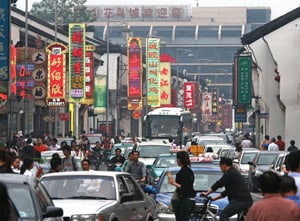MECHANISMS OF GROWTH
By Antonio Guerrero
Twenty-five years ago, Goldman Sachs’ Jim O’Neill was still more than a decade away from coining the acronym BRIC to identify the high-growth markets of Brazil, Russia, India and China—an event which signaled the recognition that emerging markets would become central to powering global growth.
 |
|
Photo Credits: HUNG CHUNG CHIH / Shutterstock.com |
At that time, however, emerging markets remained on the far edge of investors’ radars. In contrast, analysts now regularly speculate over which emerging markets will graduate to developed status—and how soon.
“Twenty-five years ago, there were no emerging economies, only underdeveloped or least-developed countries and centrally planned economies,” says Ravi Ramamurti, director of the Center for Emerging Markets at Northeastern University. “These countries were seen as backward, poor and saddled with 85% of the world’s population,” he adds, recalling that Latin America was mired in a debt crisis, the USSR was collapsing, India had anemic growth and China was struggling to reform its state-controlled economy.
But much has changed. “Emerging economies today are like the tail that wags the dog,” says Ramamurti. “They may account for only one-third of world GDP, but they drive global growth because they account for two-thirds or more of world GDP growth.”
China made the greatest leap. “By far, the most dramatic change over the past 25 years has been the emergence of China, which in short of a generation has become the world’s factory floor,” says Bryn Heimbeck, CEO of Trade Tech, which provides software solutions to logistics companies. “The impact on the global economy has been dramatic, and in 2010 China rose to the world’s second-largest economy, trailing only the US.”
Howard Gelbtuch, principal at Greenwich Realty Advisors in New York and a member of the Counselors of Real Estate, says anecdotes over the rapidly increasing affluence of people in China are legendary. “The first McDonald’s fast-food restaurant opened in China in 1990. By 2013, the company expects to have 2,000 outlets there.” Chinese consumers are generating global demand for goods and services. “We’ve gone from ‘Made in China’ to ‘Sold in China.'”
NET CREDITORS
While Europe grapples with a debt crisis, emerging markets have improved their finances and are on a more solid footing. “Many countries in emerging markets have shifted from net debtors to net creditors,” notes Nadim Matta, managing partner at Schaffer Consulting. “The most dramatic example is China, which briefly held the position of the world’s top creditor nation. With this shift comes political clout vis-à-vis debtor nations: The US is now the world’s top debtor.” Matta says another major shift has been the increase in South-South capital flows—with China investing in Africa and Brazil investing throughout Latin America.
The new environment has translated into improved risk perception. Matthias Kuhlmey, managing director and partner at HighTower in New York, notes: “Whereas in the early 1990s about 2% of emerging markets countries and their debt was considered investment grade, today nearly 60% qualifies.”
While commodities and cheap labor were important drivers of an export-driven model for emerging markets in the past 25 years, the next 25 years will increasingly be about domestic-led growth, and in particular consumption growth, as the middle class in emerging markets continues to rise, predicts José Morales, CIO for US and EMEA at Mirae Asset Global Investments.
“Most of the BRICs are likely to become ‘developed markets’ in the next quarter-century, and several in Southeast Asia and Latin America will also likely achieve that status,” says Harry Broadman, chief economist and leader of the emerging markets practice at PricewaterhouseCoopers (PwC). “But I think that the one region where 25 years from now investors and businesses will look back and wonder why they didn’t move quickly enough into today is sub-Saharan Africa.”


